|
Our last day of excavation has unfortunately come to a close, and we have backfill day to look forward to next time. However, the fact that we were wrapping up does not mean that this week's finds were not fruitful! I spent the day with Will, Rob, and DuVal excavating the "downstairs," or Unit 13. We made quite a bit of progress in taking the unit deeper. We took it down from Level 10 all the way to 16! Here is a picture to give you an idea of how much we took out of this unit: Since we did not find any features on our way down, we mostly screened what we took out through 1/4" screen. What we found were mostly lithic artifacts, along with some burnt clay. The reason we were so eager to take out so many levels in out last day, is because Dr. White believed there to be a Gilford component towards the bottom. It turns out that this was correct, because we were lucky to find this in our screen: one full Gilford point. This find is significant because it shows that people were in this area hunting and living here in the Middle Archaic period. After finding mostly flakes and debitage, it was refreshing to find one whole artifact that is diagnostic like this point. This find was a great way to wrap up our day, and along with it the last day of excavation at the site. It will be a bit sad to cover up our unit, but students next semester will be opening it up again to discover more about this very interesting Guilford component!
0 Comments
All good things must come to an end, including field school. Today marks our last excavation day in the field, and though we are all sad to see it end we are proud of the work that we have accomplished over the semester! In the morning, JJ and I continued our work on removing Feature 11. This feature is very large in both depth and width, so its removal has been a slow process. Its boundaries are also not very distinct, so going slowly in order to avoid removing parts of the matrix is even more important. Eventually, the excavation of Feature 11 turned into a one person job, so JJ went to help in Units 3 and 12 while I continued excavation and piece plotted any FCR I came across. Unfortunately, I was unable to finish with Feature 11 by the end of the day. Looks like that will be a job for next year’s group! Unit 13 has come a long way since the beginning of the semester and is almost to ground level. There have been a lot of interesting artifacts from this unit and today was no different. By the end of the day, Katie, Robert, Duvall, and Will dug through several sterile levels before uncovering some flakes and a Guilford point. JJ and Caroline spent the afternoon taking careful profiles of the north walls of Units 12 and 13. This included a description of the dirt, comprised of its composition, texture, and color according to the Munsell color chart. It is important to record this information now, as the units will be completely filled in by the end of next Friday.
Ben and Sam worked on wrapping up the excavation of Unit 4 by piece plotting any remaining artifacts. After completing this task, they backfilled Feature 12. We had some extra time at the end of the day, so we began to start backfilling the block in order to cut down on our work next Friday. It is important to backfill features and units, as this is the best way to protect them until next spring. I was a little sad to see Feature 11 get covered up, but at least I no longer have to worry about collapsing its walls! After that we covered the units with out big tarp and called it a day. Hopefully the nice weather will return next Friday! -Well! It was yet another very busy day at the site! The end of the semester is getting nearer and with only one more day of solid excavation on our schedule remaining, we set to work so that we would accomplish as much as possible.
In Unit 13, Dr. White, Mr. DuVal, Robert, and Caroline continued the excavation and mapping of the features that remained in the unit, with two of them possibly being post holes well below the plow zone. Speaking of the plow zone, they also mapped out the different zones in relation to one another and for future reference in which we can accurately map out where the data is being collected from. In Unit 5, Will and Katie both continued the process of piece plotting in the floor of the unit, marking each object so that we can get a better idea of what has covered the unit with so much debitage. In Unit 4, Sam and Ben bisected the feature (Feature 12) that took up a large portion of the unit. Taking their time, they made a slight step within the feature as it changed its shape while they were excavating it. They also removed several pieces of FCR (fire-cracked-rock) that were then brought back to the lab so they could be analyzed. In Unit 6, Ella and I started with the removal of the back fill that was put into the excavated half of Feature 11 to protect the other half that had yet to be excavated. After removing the back fill, we drew the feature in profile so that we would be able to see exactly how large it was and the location of anything that we removed once we excavated the remaining half. We then took the core of the other half of the feature from the top to the bottom as a flotation sample. After this we began to remove the the southwestern half of the feature. We continued to do this until we ran out of time and then refilled the feature with back fill so that we could continue without it being disturbed. This week I decided I would do something nice to make up for my many clumsy mistakes. I got Dr. White an apology cake that said “I am sorry for stepping on the walls,” because I am very clumsy and have stepped on a couple of walls this past semester. When we got to the site we started as we usually do. First we started up the pump to get rid of the water and after it sucked out all the water we removed the tarp. After we removed the landscape fabric and plywood covering our unit (Unit 4). Me, Sam, and Caroline were all working together. We were tasked with getting a flotation sample from the inner zone of the southeast half of Feature 12. Once that was done we screened the southeast half of the outer zone. After that we set up the photo board and photographed that half of Feature 12. Personally I really enjoyed cleaning up the unit for a picture because I find using the paint brush really satisfying. By the time we did all that we were done with the day so we placed landscape fabric in the feature and backfilled. Personally I am really proud of myself for not messing anything up this week. DuVal, Robert, and Kate continued on the wall at Unit 13, where they found part of another point! And Ella worked on Feature 11 in Unit 6 directly behind us. She was doing very similar things to us except the feature she was working in had been started weeks before (and is much deeper). Cleaning up went the same as it does every week. First we placed landscape fabric over any exposed features and then back filled, after that we placed landscape fabric in the units as well as plywood. Then we brought the tarp back over and covered the site up again until next week.
I would like to apologize for my lack of pictures: this week I got to into what I was doing and forgot to take any. As always this class is super fun and I cannot wait to get back out there next week. It felt good to be back in the field after missing last week! Day 10 was a productive one that I spent working with DuVal and Rob excavating Unit 13, also known as the really cool wall of several features. DuVal and I started the day by mapping out Feature 4, which is a pit that is full of fire-cracked rock. Since it is right next to Feature 3, which may have been a nut roasting pit, it is possible that this spot was where people made lithic tools and ate snacks together. Here is DuVal scraping extra soil out of the feature to show the rocks in more detail. As you can see, the feature is on the very edge of our unit, so unfortunately we could not excavate it in its entirety, as we would have to begin a new unit to do so. I spent the morning mapping the artifacts out as they sat in the soil on graph paper. The soil that Duval is removing from the feature was put safely into a bag as a flotation sample, in which it will be pumped and filtered through water to harvest very small items. This can include wood, bone, and charcoal. Most of our time in Unit 13 today was spent trowel scraping for artifacts, which we then plotted on our map of the unit. This method is done by taking a trowel, and removing the dirt in thin layers to reveal artifacts, and leaving them in their place to map them. Doing this method, Rob was able to find two different fragments of large Savannah River projectile points! This one is the lower half of one. You can see how large it is on the graph paper: We also found a lot of flakes and small sherds (burned clay?) through screening the dirt removed from the Unit through a 1/4" screen. We finished up our day by taking the unit down to an even 140 centimeters below datum -- the base of level 7. I'd consider this a day well spent!
Today we had some really exciting finds! But to start Sam and I began by finishing up Unit 3 for this semester. We took it down to the base of the second plowzone and scraped and took a final picture of it. At this level we still found a few pieces of ceramic.
JJ and Ella continues their work in Unit 6 on Feature 11. They spent most of the day removing the matrix around the feature. While removing the matrix they did find a quartz projectile point and a biface in the edge of the feature. In Unit 4 Ben scraped the unit for the picture and then began mapping Feature 12. After finishing up in Unit 3 I moved down to Unit 13 to help Robert with paperwork while DuVal continues to excavate the unit and the features in it. The base of a large projectile point was found in the unit and an entire projectile point was also found! The point was in perfect condition! DuVal excavated the corner of Feature 4 that was exposed in Unit 13. It's always hard to get back in the swing of things after a long break, but we didn’t let post-spring break lethargy slow us down this Friday! As usual, we began by removing the water that had collected in the units. It was colder out than it has been in the past few weeks so there weren’t many critters to contend with except one mouse that was slow in evacuating. We continued on with our work despite our new friend and accomplished quite a bit by the end of the day. To begin the day, Sam and Caroline finished up their unit after reaching the end of the plow zone in Unit 3. After completing the necessary paperwork and taking pictures of the finished unit they split up to help in Units 4 and 13. In the block, JJ and I continued our work on Unit 6, specifically the matrix around Feature 11. We started at about 110 centimeters below datum and slowly scraped our way down, stopping periodically to piece-plot uncovered artifacts. It was a slow process as the unit was filled with fire crack rock and flakes, but we managed to make it to about 120 centimeters below datum by the end of the day. Ben began his work in Unit 4 by very carefully scraping the surface of the unit with a trowel. In removing all of the loose dirt, it becomes easier to see slight or pronounced color variations in the soil that could indicate a feature or other important aspects of the unit. This is an important first step, as these variations can be very difficult to see at times. After completing this task, Ben began piece-plotting any artifacts he came across and later worked with Sam to map out Feature 12.
Over in the wall section of the site, Robert and DuVal worked on excavating Unit 13, where they came across two diagnostic Savannah River points. One was partial and was missing the tip, but the other was quite large and complete. These points were found in situ, meaning they were found exactly as they had been left and were not disturbed by plows or other intruding forces. The fact that these artifacts were both diagnostic and found in situ makes them very valuable to our understanding of the site. When 2:30 rolled around we packed everything up and covered the units (at record speed) with the big blue tarp, officially marking the end of another fun and successful field school day. Today was yet another busy day at the site! As the halfway point as passed for the semester, we continued on in our search into the unknown with more fervor than ever! And with our renewed energy from Spring Break we continued to expand our analysis of the "upstairs" block of the site along with our continued work along the wall as well.
In Unit 6, Ella and myself started with the removal of the backdirt that was placed within Feature 11 to protect it over the course of Spring Break. After removing the backdirt, we carefully began excavating the matrix that surrounds the Feature within Unit 6. The matrix, consisting of the soil and material that is directly touching the feature, contained several artifacts consisting of flakes. We also were able to uncover not only a biface that was on the edge of the matrix and the feature itself, but also so a magnificent quartz point! In Unit 4, Ben started by clearing away the remaining backdirt that was left while we worked around the unit to protect the floor. Then he cleaned away the tunnels that were created by bugs and worms since the last field season, allowing Dr. White to prepare the photo board and to determine the size and area that needed to excavated following the further exposure of Feature 12. Feature 12 itself contained several exposed cracked rocks that could have possibly been cracked through repeated heating in a fire pit, though we won't be able to further our thoughts on this until further excavation is completed. Ben and Sam then worked to map out the feature as well as bisect it, while also determining how to go about the excavation of the southwestern half of the feature. Caroline, Robert, and DuVal continued excavation in Unit 13 along the wall, furthering our reaches into the past as we grow nearer to another exposed feature that could reveal more valuable information. While excavating around the removed feature (Feature 3) however, they were greeted by a two wonderful discoveries! First, they exposed the lower half of a broken spear point that still contained its haft, and then shortly later, they exposed a larger spear point that was completely intact! Dr. White was excited by these discoveries as well as the rest of the team! The day ended with us refilling Feature 11 with back dirt, as well as removing the the three points that we uncovered. Leaving the site for yet another week as we prepare to return with more energy! This week began as usual but with one small change: we were three people light. Caroline, Ella, and Sam could not show up for various reasons leaving us short staffed, probably resulting in slower work. Other than that we began as usual. We pumped out the water the tarp had collected and removed the tarp. The labor was divided up into three groups, me and Katie, Dr. White and JJ, and DuVal and Robert. Katie and I spent the field day resuming the piece-plotting we had been working on the week before in Unit 13. We did not find anything in particular that was too cool or big, just more small fragments of pottery and lots of flakes. Also, I found a small piece of bone. It isn’t very substantial or important but I think it is cool. The only reason bone this old is preserved is because it was in a fire of some form. Dr. White and JJ started excavating a feature (Feature 11). They found a piece of charcoal in it large enough that Dr. White believed to be substantial enough to save for carbon dating if desired. The feature is a pit of some kind. To excavate it they bisected it with a line level and dug it out with a spoon. A standard spoon was not sufficient so Dr. White broke out the heavy artillery: a serious spoon. To my knowledge DuVal and Robert were excavating a feature similar to JJ and Dr. White’s, with a main difference being that half of it is exposed where the hill cuts off. This makes for a pretty cool side view. The day ended with the usual ritual of resetting the very large tarp over the excavation area and weighing it down with buckets of dirt. Hopefully it will protect the site for the next two weeks. We are all looking forward to getting back at it in the following weeks.
Day 7 at the field school already! That means we're just about half way through the semester, and that we still have a lot of stuff to do!
To start with, the large tarp that Dr. White purchased for us to use to cover the units was filled with a large amount of water, so much in fact that it would have taken us too long to bail out. Dr. White however, was prepared for this and showed us his own water pump that he had designed to remove the water from the pit at a much faster pace, while he talked to us on how we would be moved around starting the day so that more of us could have a more rounded approach to the site. Katie and Ben would continue working in Unit 12, Sam and Caroline in Unit 3, myself and Ella in Unit 6, while Robert and DuVal worked in the Downstairs in Unit 13. Lots of different things occurred over the course of the day in Units 3, 6, 12, and 13! In Unit 12, Ben and Katie spent the entire day piece-plotting their findings while scraping with trowels, attempting to find flakes and other artifacts in the southern third of the Unit. Throughout the day, they mainly found flakes and some small pebbles and rocks. In Unit 6, Ella and I worked extensively on preparing the bottom of the previously excavated unit from last semester where they had dug down to 100 centimeters below the datum level. First we cleaned up the floor from the tunnels that the worms and bugs had created since the end of last field season, and then we took a picture of Feature 11 which is exposed at the bottom in the southeast portion of the unit. Shortly after cleaning up the floor, we prepared and began dressing the feature while we also piece-plotted some of the artifacts that we uncovered while we were cleaning up the bottom of the unit. Though we were unable to begin excavating Feature 11, we are prepared to begin excavating the next week. In Unit 3, Caroline and Sam continued to bring down the base of the unit to about 62 centimeters below the datum level (the bottom of Zone 2). While they were scraping across the bottom of the unit, they found several more artifacts, such as pottery and flakes, and specifically one of interest was that another ax head! It was much more clearly defined than that of the previous one, exciting not only all of us students at the site but also Dr. White especially, who had exposed the ax in the first place. Unit 13, where Robert and Mr. DuVal were working for the entirety of the day, continued to come closer to that of an exposed feature in the wall. They had to progress slowly due to the unstable setting of the cut into hill, but they were able to get close enough to the feature that another unit maybe be opened up directly over an adjacent feature so that we can gain as much information as possible! The day ended with that of Robert showing us some recreations of Native American blow guns that he had made to show how darts could possibly been used by prehistoric peoples in the Carolinas. |
Student Blog (2018)Blog posts written by the students of the 2018 Broad River Archaeological Field School Archives
April 2018
Categories
All
|

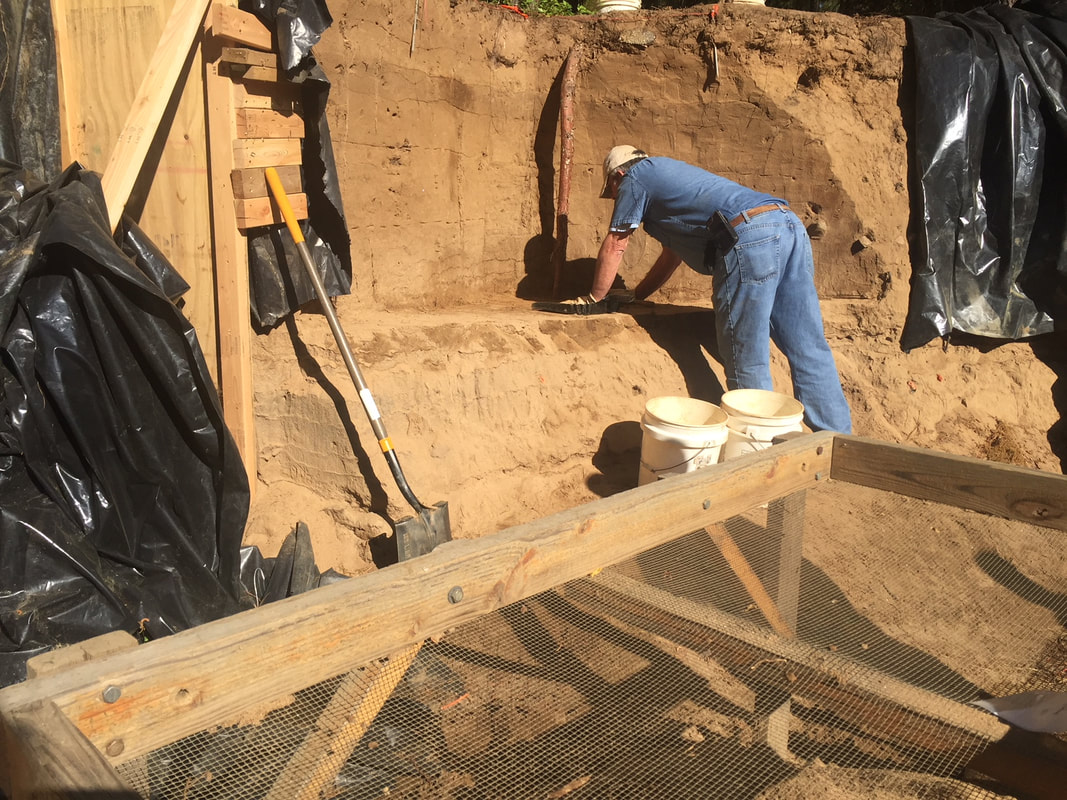





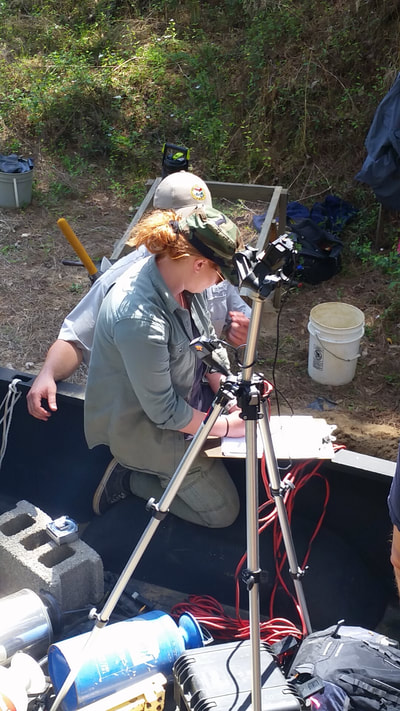

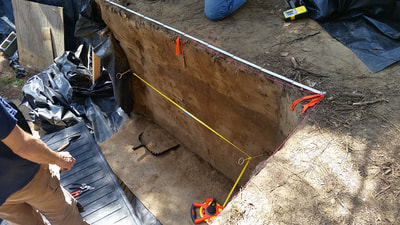
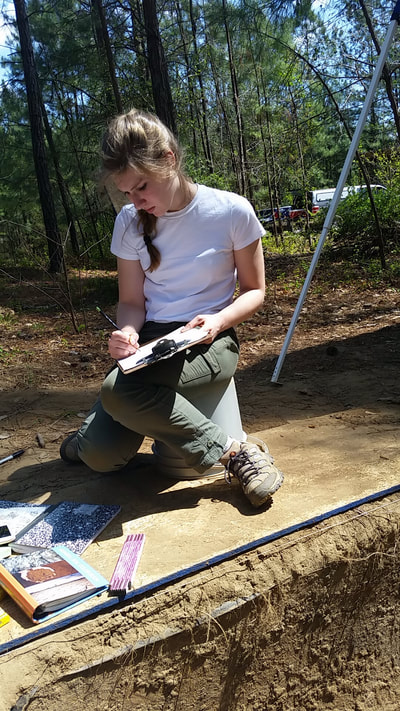


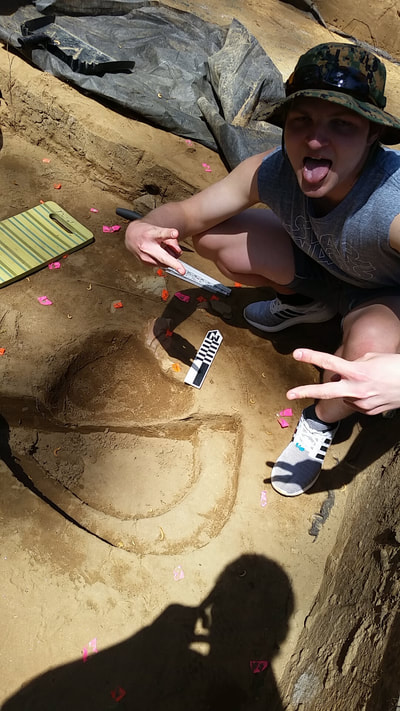












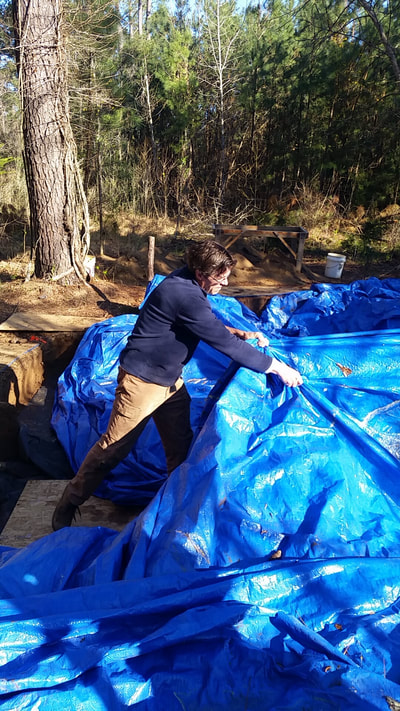


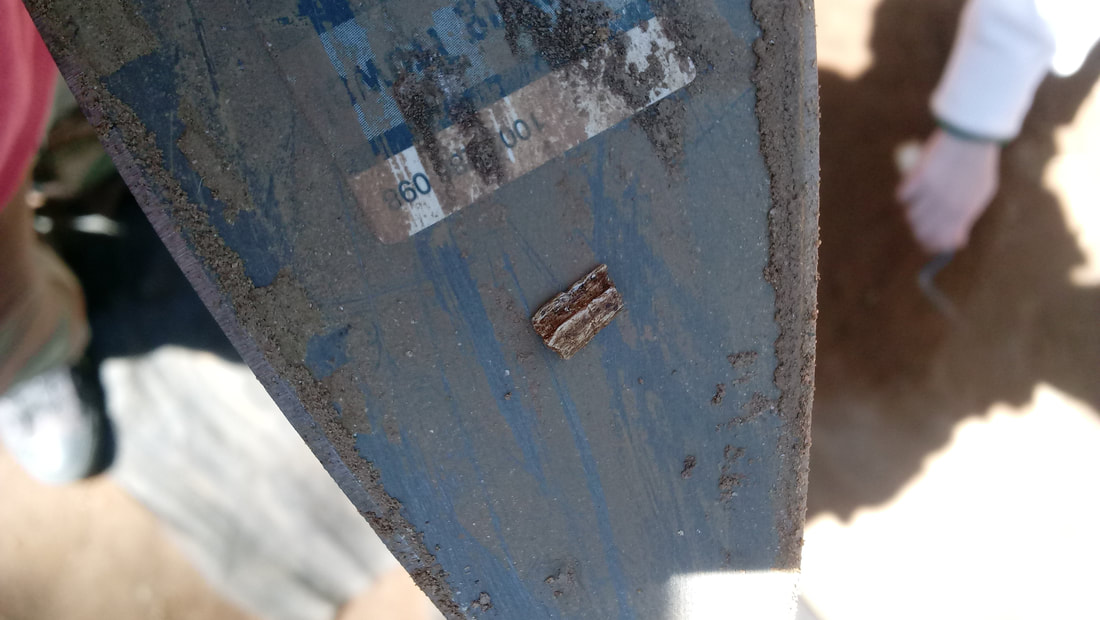

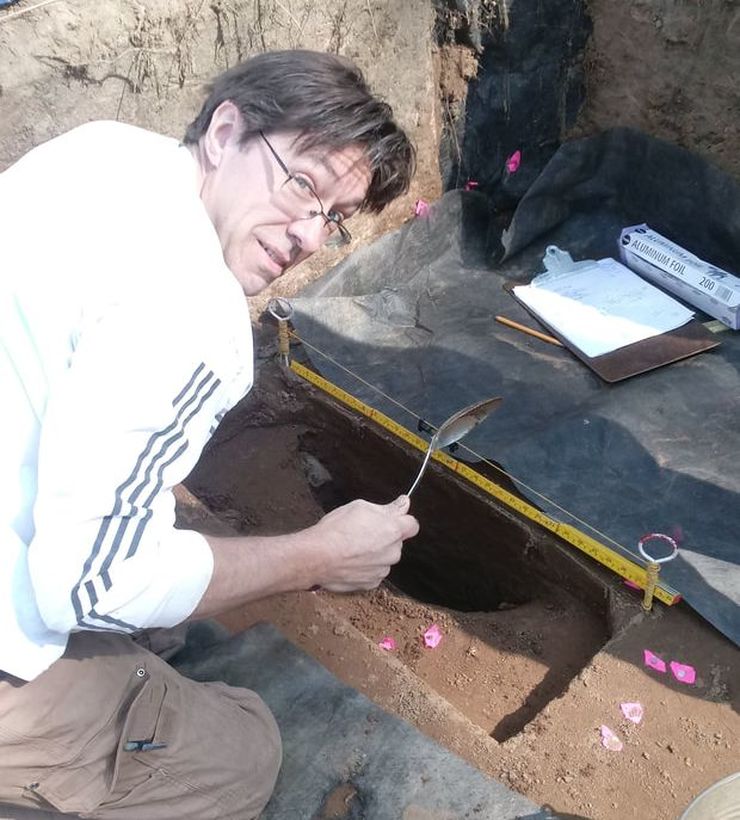




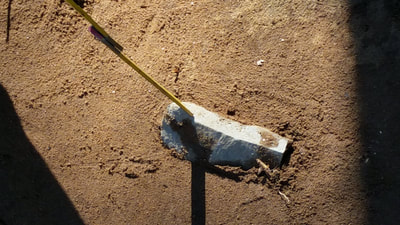

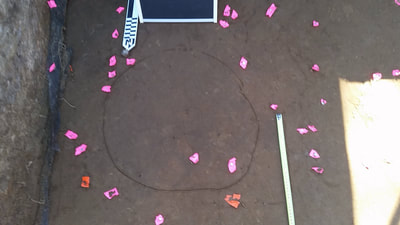
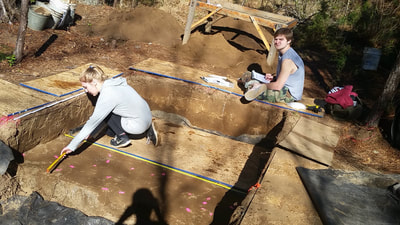



 RSS Feed
RSS Feed
